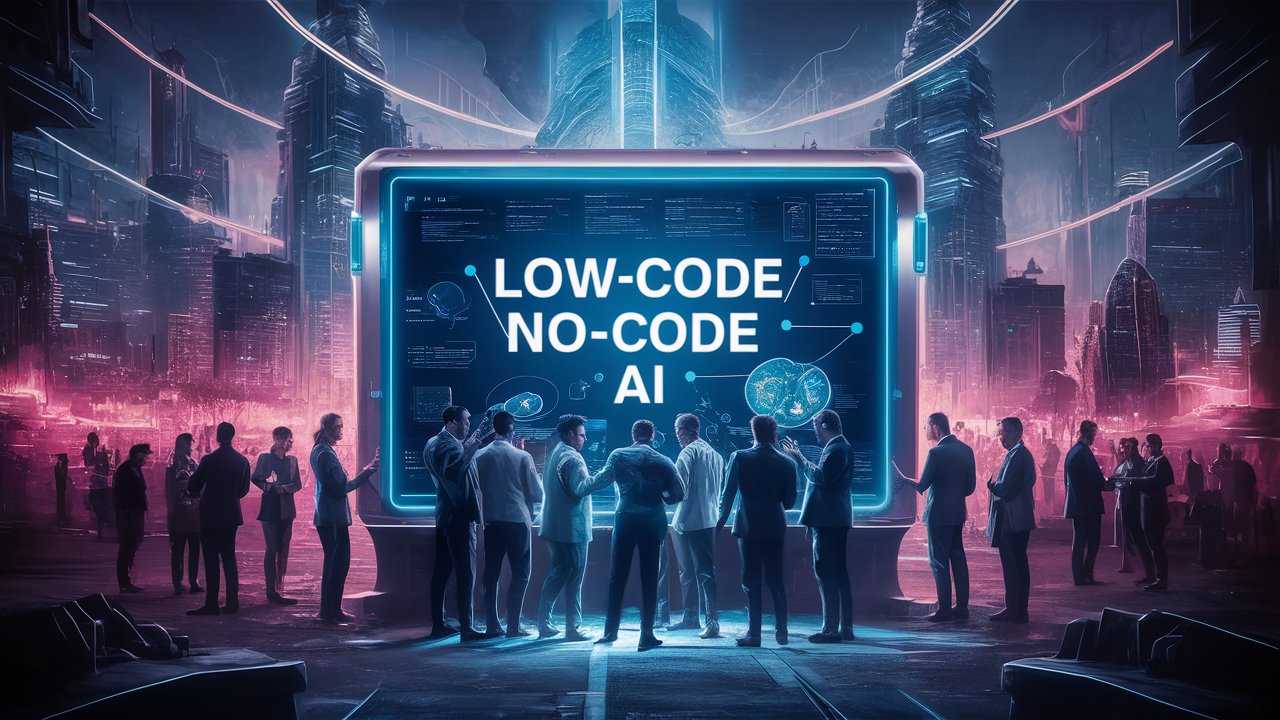Low-code/no-code AI tools have changed how companies look at artificial intelligence. The new tools bring a much larger population, varying technical skills, closer to AI in a much simpler and quicker way of developing an AI model. Build-out of AI-driven solutions using the low-code/no-code technique is relatively cost-effective and can optimize any KPI across departments. These tools allow AI solutions to be developed almost instantly so that companies can build and implement AI solutions, for example, chatbots, data analytical tools, and personalized recommendation services through such tools, to make operational productivity and customer experience better. The possibility of building AI solutions with little or no coding is no longer an insipid pipe dream. Low-code/no-code AI tools make it possible for businesses to develop AI solutions without complex coding. In this article, we will explore the advantages of low-code/no-code AI tools, popular tools available in the market, and how businesses can use them to build AI solutions.
Rise of Low-Code/No-Code AI Platforms
In all recent years, low-code and no-code AI platforms emerged as a category in the AI landscape. Their goal is to democratize AI by using a visual, code-free, often drag-and-drop interface in deploying AI and ML models, hence allowing the building of AI-powered solutions without the need for deep coding experience. Among the main benefits of low-code/no-code AI platforms is the time and cost of developing AI solutions. Traditional AI development consists in building an AI solution, which takes a considerable amount of time and requires high monetary investments in terms of skilled developers and data scientists. In contrast, low-code/no-code AI platforms provide a quick and cost-effective way to develop AI solutions.
The other advantage of low-code/no-code AI platforms is making citizen data scientists. These are people with non-data scientist backgrounds without formal training but with the necessary skills to develop and deploy machine learning models. Low-code/no-code AI platforms make them capable of creating and rolling out AI solutions without dependence on heavy coding experience. Today, in the marketplace, there are low-code/no-code AI platforms like PyCaret, H2O.ai, and DataRobot. These include automated machine learning, model management, and data visualization. Generally, it is an auspicious development in the AI landscape. It will make AI democratized and available for use by the masses of other organizations and diverse individuals. As technological development accelerates, even more low-code/no-code AI platforms are expected to hit the market.
Definition and Core Concepts
Low-Code/No-Code AI is a toolkit and platform through which users create and launch solutions based on artificial intelligence without having to be responsible for writing an excessive amount of code. These tools provide a visual interface with drag-and-drop functionality that helps nontechnical professionals to quickly build and deploy new AI applications. Low-code/No-Code AI tools are meant to close the cognitive gap between the technical and non-technical staff, enabling maximum collaboration for the solution of AI.
In other words, democratization is supposed to be the central thread running through the concept of Low-Code/No-Code AI. These tools are designed such that the difficulty in building the AI is abstracted away to enable the user to focus on the business problem they are working on—essentially, not to get mired in the technical details surrounding building an AI solution. Users can develop and deploy AI applications many times faster and more efficiently using Low-Code/No-Code AI, thereby developing competencies that do not require long training in coding or data science.
Technology of Low-Code/No-Code Tools:
AI Tools make use of a mix of pre-built algorithms, machine learning models, and drag-and-drop interfaces to bring the problematic AI-development process into the lap by automating a series of technical tasks in an AI solution, including data preprocessing and model selection. This is enabled through freeing users to focus on the business problem they are trying to solve and not the technical details of AI solution construction. Low-code/No-Code AI tools provide increasing capabilities in terms of scalability and flexibility—things that were not inherent in the previous AI development approaches. These tools can also build a wide range of applications, from simple chatbots to complex predictive models. They also interact with other systems and technologies, including but not limited to cloud computing and big data platforms.
In a nutshell, Low-Code/No-Code AI tools present the ability for nontechnical professionals to get their AI solutions up and running quickly and efficiently. These tools make AI development easier, freeing users to focus more on the business problem they need to solve rather than the mechanics of putting an AI solution together. Low-code/No-Code AI tools democratize AI so that it unlocks AI’s predictive powers for enterprises of any size or across industries.




